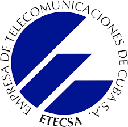Executive Secretary

21st International Symposium on Electrical Engineering
SIE 2025
Abstract
This study presents the development of a device aimed at supporting the rehabilitation of muscle atrophy resulting from sedentary lifestyles, injuries, or underlying pathologies—conditions that significantly compromise muscle mass, strength, and functionality. In Mexico, 58.3% of adults over the age of 18 exhibit physical inactivity (Government of Mexico, 2019), posing a considerable challenge to neuromuscular health. The current lack of specialized tools hinders the objective assessment of muscular condition and the personalization of preventive or hypertrophic exercise regimens. To address this gap, an electromyographic (EMG) monitoring system was designed to evaluate muscular activity in individuals affected by atrophy due to inactivity. The system facilitates the development of adaptive exercise routines tailored to promote hypertrophy according to the type of muscle fibers involved. Three electromyograph prototypes were constructed, each incorporating circuits for signal acquisition, preprocessing, and digital analysis. Experimental trials were conducted on volunteers, during which EMG signals were recorded as participants engaged in standard and morphology-adapted exercise protocols. A microcontroller-based algorithm was integrated to perform efficient real-time signal processing. The prototypes demonstrated the capacity to capture EMG signals with a high signal-to-noise ratio, while avoiding saturation of the analog-to-digital converter (ADC). Notably, signs of muscle fatigue were observed during activity, characterized by reductions of up to 50% in the amplitude of the sustained EMG signal. The system enables quantitative evaluation of muscular condition, thereby facilitating the dynamic adjustment of rehabilitation routines. These findings suggest that the proposed system supports personalized rehabilitation strategies and holds potential for integration into intelligent bionic interfaces.
Resumen
En el presente trabajo se propone un dispositivo diseñado para auxiliar en la rehabilitación de la atrofia muscular, asociada al sedentarismo, lesiones o patologías, como un daño que reduce significativamente la masa, fuerza y funcionalidad del músculo. En México, el 58.3 % de los adultos mayores de 18 años presentan inactividad física (Gobierno de México, 2019), lo que representa un reto para la salud neuromuscular. La falta de herramientas específicas limita la evaluación objetiva del estado muscular y la personalización de rutinas de ejercicio preventivas o hipertróficas. Este proyecto propone un sistema de monitoreo electromiográfico para medir el estado muscular en personas con atrofia inducida por inactividad, orientado al diseño de ejercicios adaptativos que favorezcan la hipertrofia según el tipo de fibras musculares. Se diseñaron tres prototipos de electromiógrafos con circuitos para adquisición, preprocesamiento y análisis digital de la señal. Las pruebas se realizaron en voluntarios, registrando señales electromiográficas (EMG) durante rutinas de ejercicios convencionales y adaptables a la morfología del voluntario. En el sistema se integró un algoritmo programado en un microcontrolador para el procesamiento eficiente de la señal. El prototipo logró registrar señales EMG con un a alta relación señal a ruido y sin saturación del convertidor analógico-digital (ADC). Durante el desarrollo de la actividad se identificaron indicios de fatiga muscular, con descensos de hasta un 50 % en la señal EMG sostenida. El sistema permite evaluar de forma cuantitativa el estado muscular y, por lo tanto, ajustar rutinas de ejercicio. Su implementación favorece procesos de rehabilitación personalizados y una potencial aplicación en el desarrollo de interfaces biónicas inteligentes.
About The Speaker

Alexandro Contreras Flores

Discussion


 Bronze
Bronze